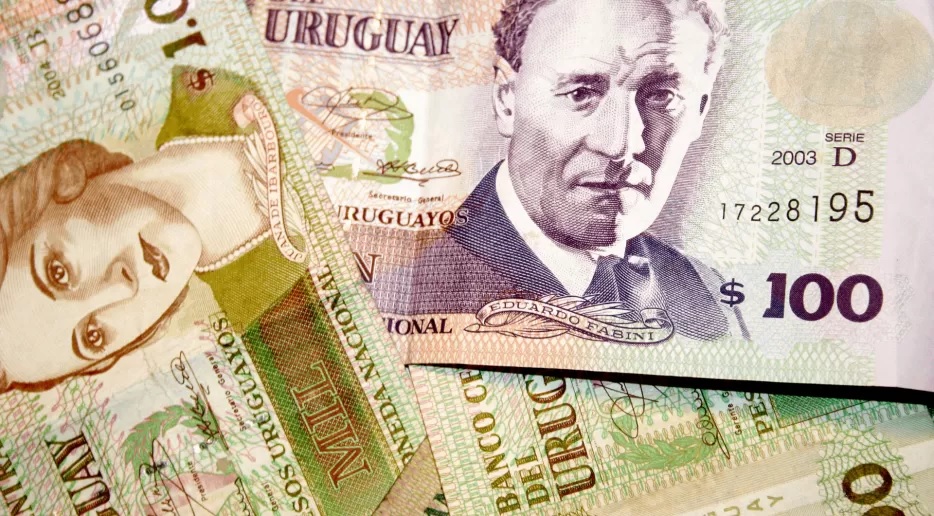RIO DE JANEIRO, BRAZIL – The Uruguayan peso surpassed the Brazilian real and became the best performing currency in South America, with a year-to-date gain of more than 11% against the US dollar.
Despite lagging against other assets for most of the year, the currency rebounded since the Uruguayan Central Bank signaled on May 17 that it planned to raise its benchmark rate by at least 100 basis points to 10.25% in mid-August amid stubbornly high inflation.
According to the report made by the Bloomberg site, the currency is also getting a boost from booming exports of agricultural commodities such as beef, wood pulp, and soybeans.

Nicolás Cichevski, manager of Economic Analysis at CPA Ferrere Consulting, pointed out that this increased supply of dollars in the country due to foreign currency inflows is one of the factors explaining the appreciation of the Uruguayan peso.
According to what he told Bloomberg Línea, this could continue in the following months because it is not expected, at least in the short term, that international prices will revert.
“The factor behind why the dollar is quite flat in Uruguay is that prices and export volumes continue at record levels. That ultimately generates downward pressure on the dollar here,” said Cichevsky.
Among the factors that explain this good present is the 40% increase in Uruguayan exports of goods in the accumulated January-May compared to the same period last year, mainly linked to the rise in commodities.
Another factor determined by the manager of CPA Ferrere is that the size of the market, “smaller” than that of other South American countries, prevents fluctuations of more significant impact due to global economic shocks such as the US inflation figure, which reached 8.66% and exceeded expectations.
The currency is also receiving a boost from booming exports of agricultural commodities such as beef, wood pulp, and soybeans.
The downside of Uruguay’s present is the danger of a loss of competitiveness of its currency.
The financial analyst, Jorge Caumont, pointed out that “it would be convenient to prevent competitiveness from falling further by suspending the announced interest rate hikes that feed the supply of dollars in our country”.
“The trend of the peso was very pronounced, and it is not sustainable from a macroeconomic and competitiveness point of view either. Five months ago, we were at UYU 44. It has fallen UYU 1 per month,” Marcelo Sibille, manager of Economic Consulting at KPGM Uruguay, told Bloomberg Line.
URUGUAYAN PESO (UYU) TO ARGENTINE PESO (ARS): HOW IS THE EXCHANGE RATE?
UYU 1 currently trades at ARS 3.06. The Uruguayan currency ceased to be less valuable -in nominal terms- than the Argentine currency at the dawn of the August 2018 crisis, when UYU 1 jumped from ARS 0.97 to ARS 1.01 in just one day.
On the other hand, US$1 buys UYU 40.11, a substantial difference from Argentina, whose parallel exchange rate (blue dollar) is equivalent to ARS 221.

